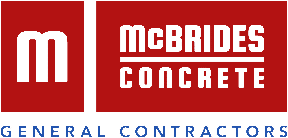Concrete is known for its functionality and strength, but it can also be used to visually enhance both interior and exterior spaces. A concrete contractor in Columbia, Spring Hill, Lawrenceburg, or even Summertown (where we are located) with a skilled hand can turn a plain surface into a work of art.
According to Paul McBride of McBrides Concrete, there are many ways to create a decorative surface on concrete floors and walls. A few well-established methods are staining, stamping, and scoring.
Concrete staining
Staining is the process of using a dye to change the color of a concrete surface. The most common stain is acid-based, which etches into the cured slab and renders a marble-like design. Acid stain is known for its deep color and rich hues, but it does not cover flaws well and may even make them appear more prominent. Many people prefer these imperfections as it gives the final product character. It takes experience to properly and safely apply acid stain since it is formulated with hydrochloric acid and other caustic compounds.
Acrylic and water-based dyes are also available. Acrylic is vibrant and does an excellent job of hiding small chips and other blemishes. These stains are not as thick as paint, however, and may not completely cover soiled areas. Acrylic stains are more predictable than acid stains. The color on the bottle is almost always the same as the end result on the concrete. Water-based dyes are semi-translucent and leave a softer tone. Outdoors, stains must be covered with sealant to ensure a long-lasting finish. Most sealers are formulated with solvent or xylene and leave a semi-gloss finish; if a matte finish is desired, a water-based topcoat is applied. Indoors, stained concrete is protected with a semi-gloss, wax-based product similar to what is used on a basketball court. It should be noted that bare concrete floors can be polished to achieve a high-gloss finish without the use of sealants or wax.
Concrete stamping and scoring
For designs that require depth, the concrete contractor can use a technique called stamping to add patterns to a concrete surface. This process requires precise timing since the stamp must be pounded into the concrete while it sets. Too soon and the impression will not stay, too late and the stamp will not be able to penetrate the hardened concrete. Concrete stamping is best applied to freshly poured cement mix. Colorants can be added to the mixture or applied upon complete and before sealing to achieve additional aesthetic appeal.
The biggest limitation to concrete stamping is that design choices are limited. Scoring is another method of etching concrete and allows for full customization. A business logo, for example, may be drawn into the concrete. Scoring is another job best left to a professional concrete contractor. Another advantage over stamping is that scoring can be done on existing surfaces.
McBrides Concrete takes pride in its work and is experienced in all aspects of concrete installation, removal, and design. For more information, contact this concrete contractor at 931-242.1600. If you are looking for a concrete contractor in Columbia, Spring Hill, Pulaski, or surrounding areas, we can provide services in those areas as well.

Recent Comments